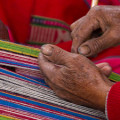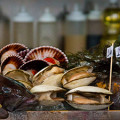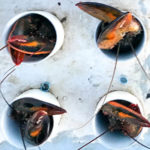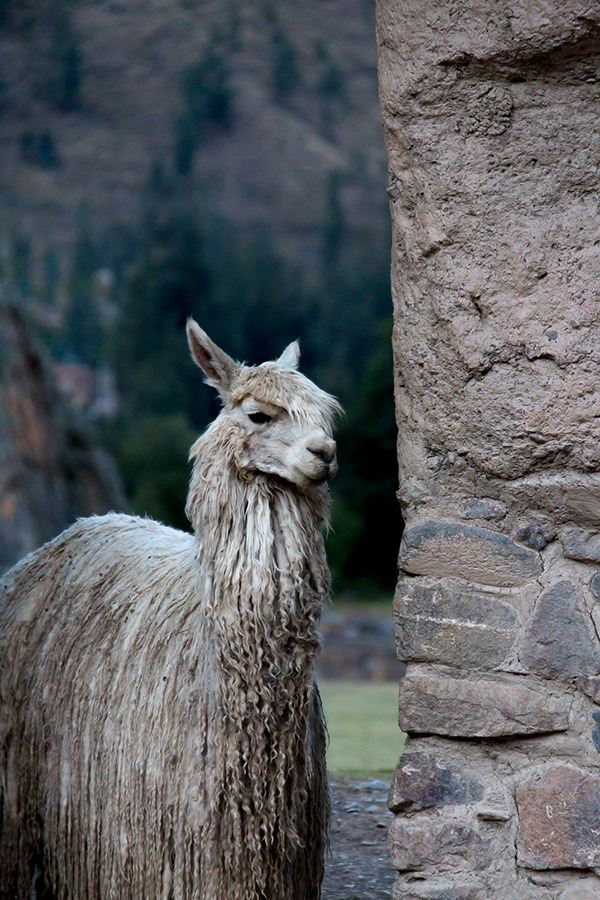
What to know before you head to Peru {photo © mrb404}
I had a lot of questions before my trip to Peru, more than I usually have when travelling. I tried to answer these questions in this document. I hope it helps some of you heading to a magical trip to Peru.
Passport and visas
Your passport should be valid for 6 months after your return date from Peru. Make a photocopy of your passport (and important papers) to leave with friends back home and at your hotel in case your documents get stolen.
You will be handed the Tarjeta Andina de Migracion (TAM or Andean Migration Card) during your flight to Peru. You must save it and give back on your way out of the country. The card proves that you’re a tourist and will save you the 19% tax the locals pay at hotels.
Health and medication
I highly recommend you get medical travel insurance before travelling to Peru. Actually, I highly recommend you get travel insurance whenever you travel.
You don’t need to get any vaccination when going to Peru but you may want to get the Hepatitis A & B vaccines, tetanus, rabies, typhoid and some basic vaccines. If you are heading to the Amazon forest, then you’ll need to get the yellow fever vaccine and some malaria treatment. It’s always best to check with your doctor or travel clinic before taking any trip.
Bring some basic medication with you such as an acétazolamide (for altitude sickness) ibuprofen (also helpful in dealing with altitude sickness), eye drops, diarrhea and nausea medication, broad spectrum antibiotics, antiseptic lotion, bandaids, etc.
If you’re heading to Lake Titicaca, Arequipa, the Colca Canyon or the Sacred Valley, you’ll need to deal with altitude sickness using various methods. Check out my post on how to manage it easily.
Mosquito repellent is absolutely necessary if you’re visiting the more humid areas of the country. It has to contain a minimum of 50% DEET, which is the active ingredient in many insect repellent products. Check on the bottle for the DEET percentage.
Even though it was always overcast in Lima when I was there, the sun in Arequipa and the Sacred Valley was ruthless and can burn you to a crisp at warp speed. I’m not sure if it’s the altitude or something else but get yourself a good sun cream with a higher protection than you would normally use and apply generously while in Peru.
Money
It’s customary to leave a 10% tip at reputable restaurants. For all other eaters, a one US dollar tip is enough. Tip your taxi driver about 2 US dollars and your tour guide about 4 US dollar for the day.
I brought a money belt with me because I was told to but I honestly only wore it a couple of times. Just be careful when walking around and don’t carry large amounts of money. Credit cards are accepted almost anywhere (except markets and road side restaurants) and there are banks, ATMs and exchange offices even in the smallest villages. Just make sure the money you’re given is authentic (yes, fake bills are a problem in Peru).
Luggage
Bring a smaller bag with you that you can pack for overnight trips or treks. Some train rides (like the one to Aguas Calientes and Machu Picchu) don’t allow suitcases on board so it’s better to have a small bad and leave your larger luggage at the hotel which you’ll be going back to on your return trip.
Wardrobe
Bring trekking shoes because climbing and going on a discovery of those precarious Inca ruins requires comfortable and non slip shoes. If you’re not planning on going on an actual trek or walking the Inca trail, the shoes don’t have to be very professional trekking shoes. This is the pair I got and it was fine.
Bring layers of clothes from very light to very warm. The different regions of Peru have varying temperatures and weather patterns. The weather can also change on an hourly basis in any one city; it can be scorching hot during the day and chilly at night, so be prepared. Make sure to pack a raincoat and windbreaker as well since it can start raining at a moment’s notice.
Electricity
The electric plugs are the same as the ones in North America and most hotels also have European plugs available. The current is 220V. We didn’t have to use any adapters to recharge any of our electronics.
Staying connected
Most hotels we stayed at and a lot of cafés and restaurants have WiFi available. We also bought a local SIM card that allowed us to say connected throughout our trip, even when we were walking around Machu Picchu.
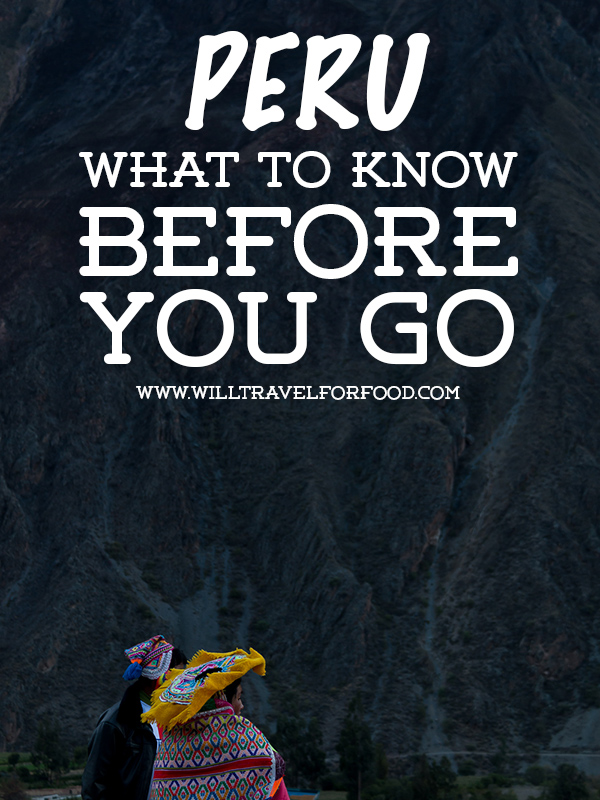
What to know before you head to Peru {photo © mrb404}
Keep in mind that Peru is not Switzerland so flights might be delayed, baggage might be lost and things might to run as smoothly as possible but you’re on holidays so just try not to stress out, go with the flow and enjoy the unpredictability and joy of travel!
This list of advice is based on one sent to me by Antipode, a Cusco-based company that helped me plan my tour of the Sacred Valley.
Read more on my Peruvian adventures here and stay tuned for my article on my visit to Machu Picchu soon!



